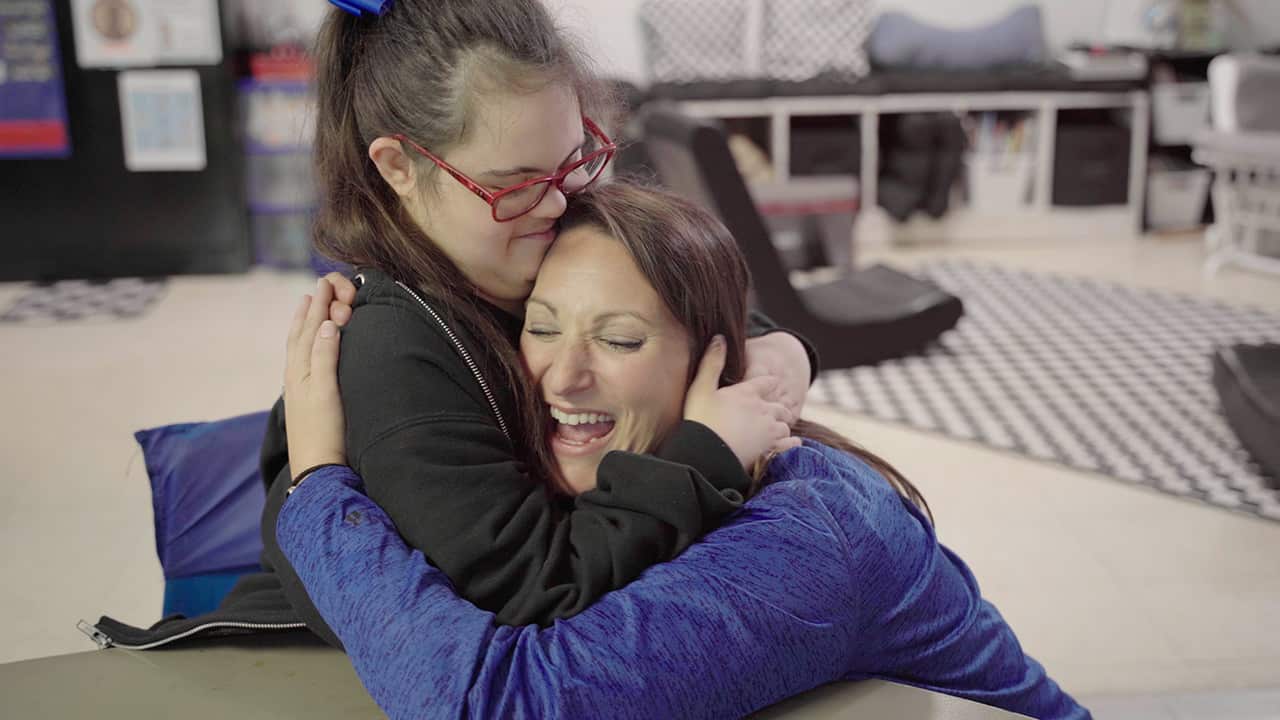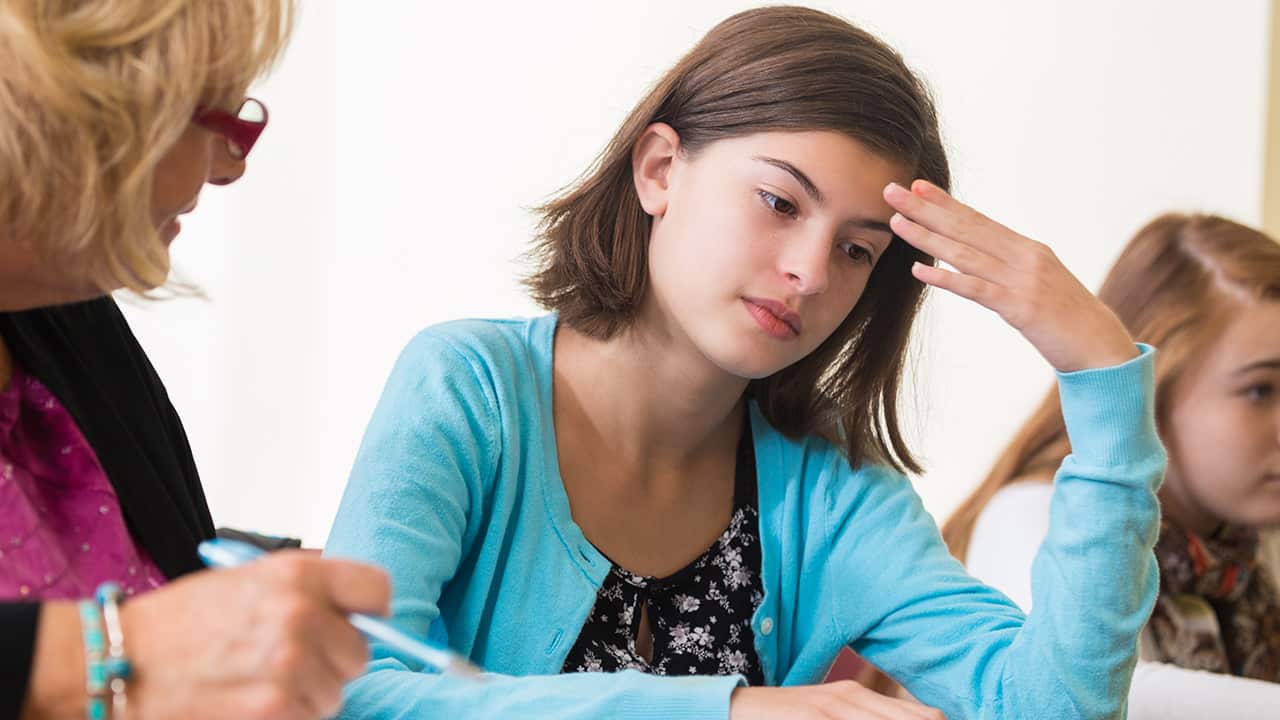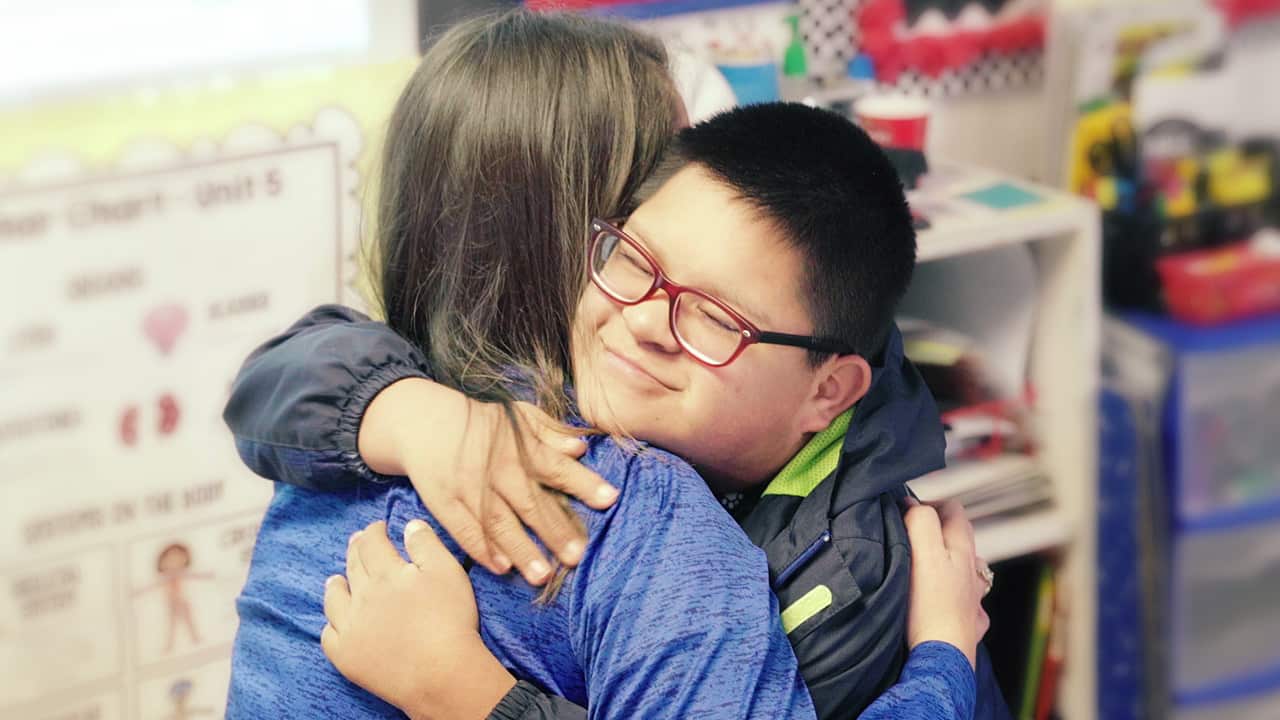I have a student who is always yelling. Do you have a strategy I could use?
Unfortunately, I do not have a specific strategy that is just for yelling. There are multiple questions that would need to be answered in order to help guide the best strategy to use and behavior to teach. First, I would spend time as a team determining why the student is engaging in the yelling behavior and then from there, focus on what it is you want the student to do instead. Once you’ve identified the replacement skill that is a more positive option, you can choose a strategy to match it. A Social Narrative or Video Model may be helpful to use for teaching the new skill in a visual format. If the student is yelling to escape things, you may consider using the break card strategy. You could also use an incentive chart to help reinforce the student when using the new skill.
How should I determine what social-emotional skills to use in order to ensure success?
First and foremost, focus on needs the student may have that are interfering most with their learning/relationships, as well as with the learning of others. Those would probably be the most important things to focus on first. In addition, there are a variety of curricula and sets of competencies available in the area of social-emotional learning to help guide you and your team in determining an appropriate scope and sequence for teaching social-emotional skills as well.
I have one student who does not like positive reinforcement. How would you deal with this?
Spend some time better understanding what truly motivates that student. If the student engages in negative behavior, are they doing so to gain attention, to escape or to gain access to a preferred toy/activity? This will give you some good information about what motivates the student. You can then start to identify potential reinforcers that match that function or reason for behavior, which may increase the likelihood of success for future reinforcement. You may also want to consider doing a formal preference assessment to better understand potential reinforcers.
Are these strategies good for older students (transition, 18–23) or better for younger students?
These strategies can definitely be used to support older students. They can be customized with different types of symbols/pictures and text to be age-respectful and individualized to the person you are supporting.
Do you have any tips/tricks for students who need the visuals, but tend to destroy them?
First consider when the student is actually destroying the visuals. Does it occur anytime the visual is present, or does it happen more when the student is frustrated/upset or escalated? If it occurs in response to the presence of the visual, you may consider changing what the visual looks like or even adding a student’s interest to the visual (e.g. sticker of a favorite cartoon character) so they are less likely to rip it. If it happens more when the student is escalated, do not present the visual in close proximity to the student while escalated as that will give them more practice at tearing up visuals. Wait until the student is calm and keep your verbalizations at a minimum, focusing only on the most important key words until the student is ready to move on.
What is your favorite behavioral strategy to reduce impulsivity?
It would be important to know more about the situations where the student is impulsive in order to identify a strategy. But in general, I think visual cues of the appropriate behavior paired with a system of positive reinforcement—initially, these should be paired together frequently—can be effective in helping to focus a student on the task at hand. If the student is impulsive in interactions with others, a social narrative or video model may be a great tool to help teach the student more appropriate ways to interact with peers.
What should I do with a student who will do the negative behavior right after I compliment him on a positive behavior?
If a student is engaging in a negative behavior in response to your attempt to provide compliments, compliments are not a form of positive reinforcement for that student. In fact, it sounds like compliments are having an adverse effect on the student. You could consider spending some time with the student to learn more about what he/she enjoys and is motivated by. Perhaps the student’s motivation is not in the form of attention. Figuring out what truly motivates the student will help you figure out how to reinforce. Some students respond better to more subtle forms of reinforcement.
When I try to pre-teach rules and expectations, the student seems to purposely do what I explained as inappropriate. Any suggestions?
One option could be to have the student model the expectation/rule in a video or take pictures of the student demonstrating the expectation/rule and integrate it into a social narrative or visual support of the rules. Make sure to provide a lot of praise and reinforcement to those that are engaging in the appropriate behaviors surrounding the rules/expectations. You may want to think about why the student is engaging in that behavior. For example, if he/she is doing it to gain your attention, make sure you are limiting your attention during the inappropriate behavior and providing a lot of attention when the student is engaged in the correct behavior.
Would ten minutes be an appropriate time for a break pass?
The amount of time for a break should be individualized for the student you are supporting. Just know that sometimes the longer the break, the more difficult it may be to get the student back to the task at hand—the student may get distracted by other things. It also depends on what the student is doing during the break time. I would recommend that you take data when you begin the intervention and use that data to help guide your team on whether or not 10 minutes is a good amount of time. In most of my experiences, breaks have been 5 minutes and under.
My biggest challenge is a child who is nonverbal, bites, scratches and has a really low attention span. Any suggestions?
Remember that all behavior is communication. As a team, you will want to try to figure out why the student is biting and scratching and then focus on teaching the student a simple way to get his/her need met in a more appropriate fashion. Teach the child simple, functional ways to get his/her needs met as efficiently as possible. Focus on what the student is good at and gradually add more complexity to what you are requesting. The student may need high rates of positive reinforcement when engaging in simple tasks and actions when learning and interacting with others.
How can I apply this in a Montessori school setting?
Visual supports and strategies can be integrated into any setting!
What strategies should I use in my resource classroom for transferring skills/format to general education?
Whenever appropriate to the need in the situation, use the same types of strategies across all environments to help increase the student’s understanding and success throughout all environments. That will give the student more opportunities to practice and be successful.
Can strategies change depending on the time of day?
That would depend on what you are trying to address with the strategies. Some strategies will be applicable across a variety of events in the day, while there may be some strategies created that are meant to address a specific issue or skill at a specific time of day.
How do you measure growth and mastery of social-emotional learning?
Growth can be measured by individual IEP goals and objectives and data collections. Some states have social-emotional learning competencies built into state standards that can be referenced in determining growth. There are also some screening and assessment measures out there that can be accessed as well.
Do you know of a program with social narrative strategy or video modeling that could be used in the classroom?
One of our solutions at n2y, Positivity, provides a platform for creating and customizing social narratives and video modeling to meet the unique learning needs of your classroom and/or students. We also provide a guide for creating and setting up the strategies for delivery in the context of everyday routines.
How do you handle teachers who are reluctant to ”˜buy-in’ to new strategies?
Just like with students, it’s important to help share the “why” behind certain strategies to help establish buy-in when trying new strategies. It also is very important to model the strategy use for teachers and to provide them with support when first putting the strategies in place to ensure that they experience success in implementing them from the beginning. Discuss an implementation plan and key steps to ensure it occurs with fidelity. Schedule a future time to connect and analyze the data with the teacher—that way they know that you will be reviewing the information and helping to support them if for some reason the strategy is not working.
Is there a symbol band where I can pull to make visual cues?
SymbolStix PRIME is a solution available through n2y that can assist in creating custom images and boards. In addition, Positivity is our online solution to assist in self-regulation and classroom management that allows for the delivery of proactive strategies within daily routines. Strategies in Positivity can be customized in many ways to individualize strategies.



